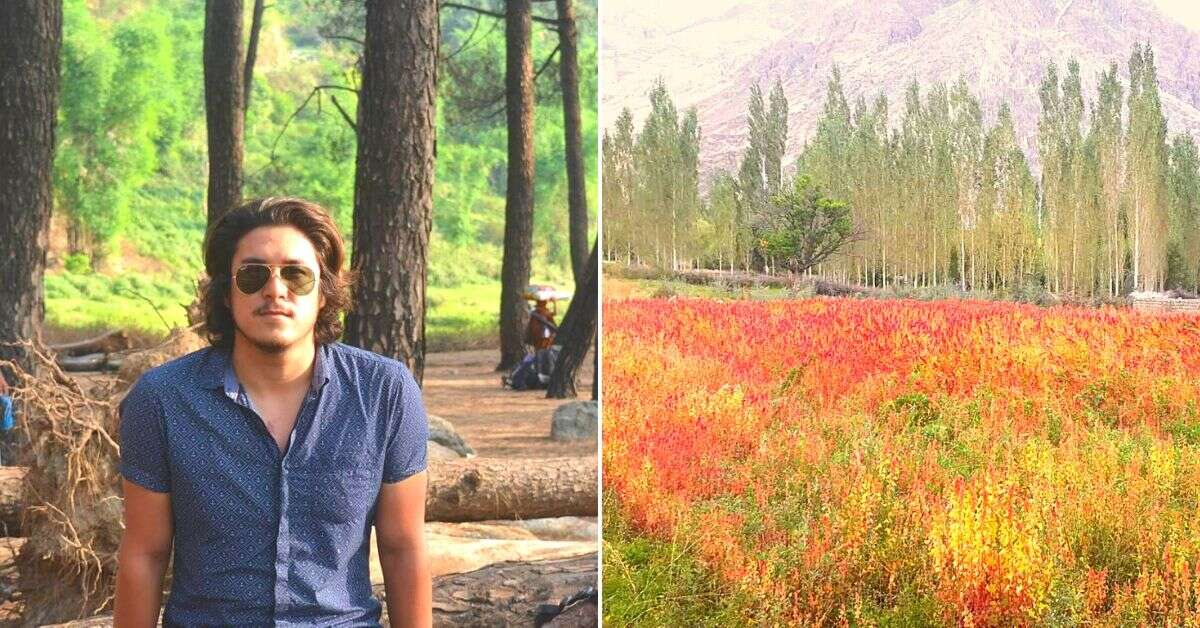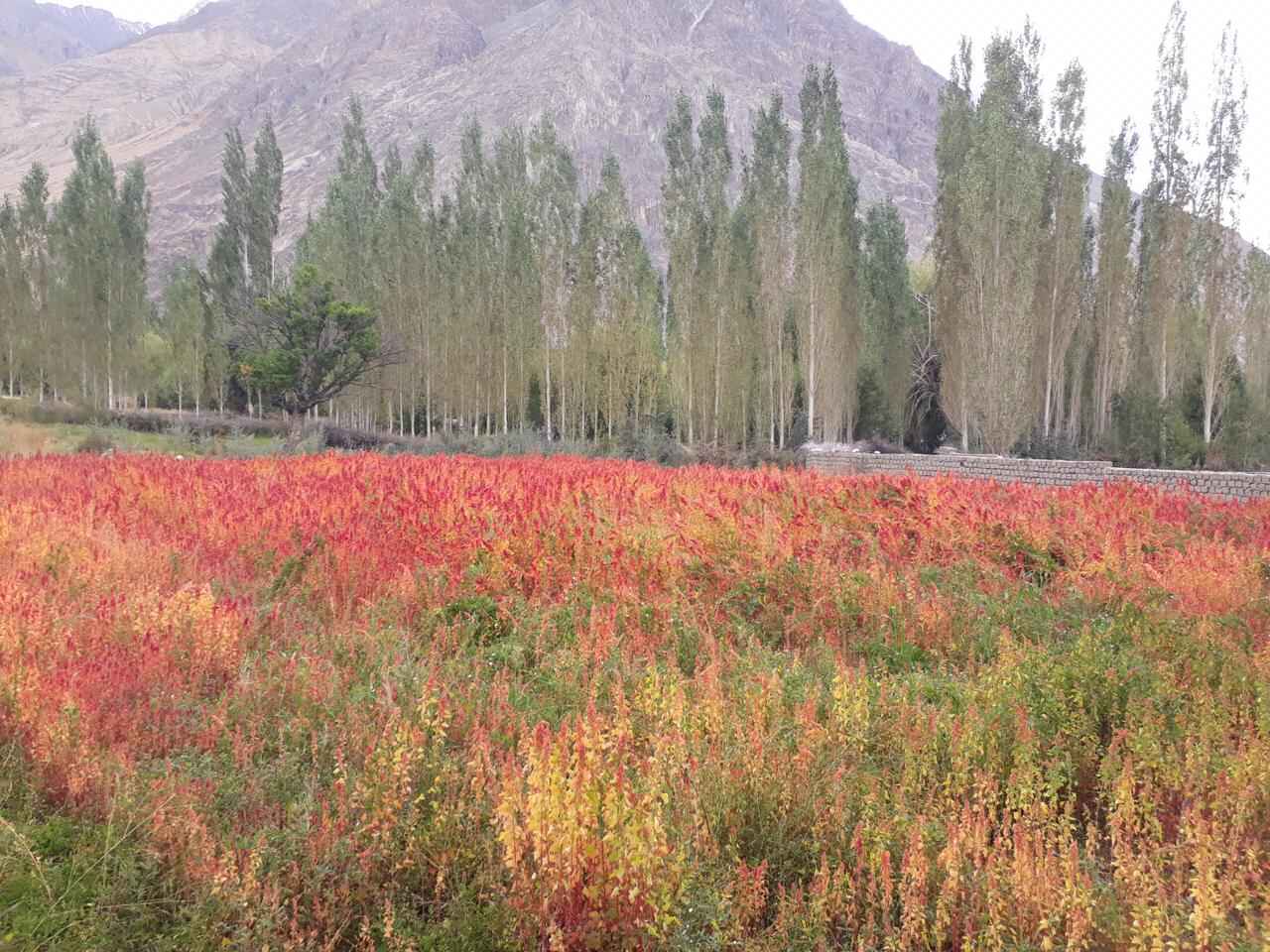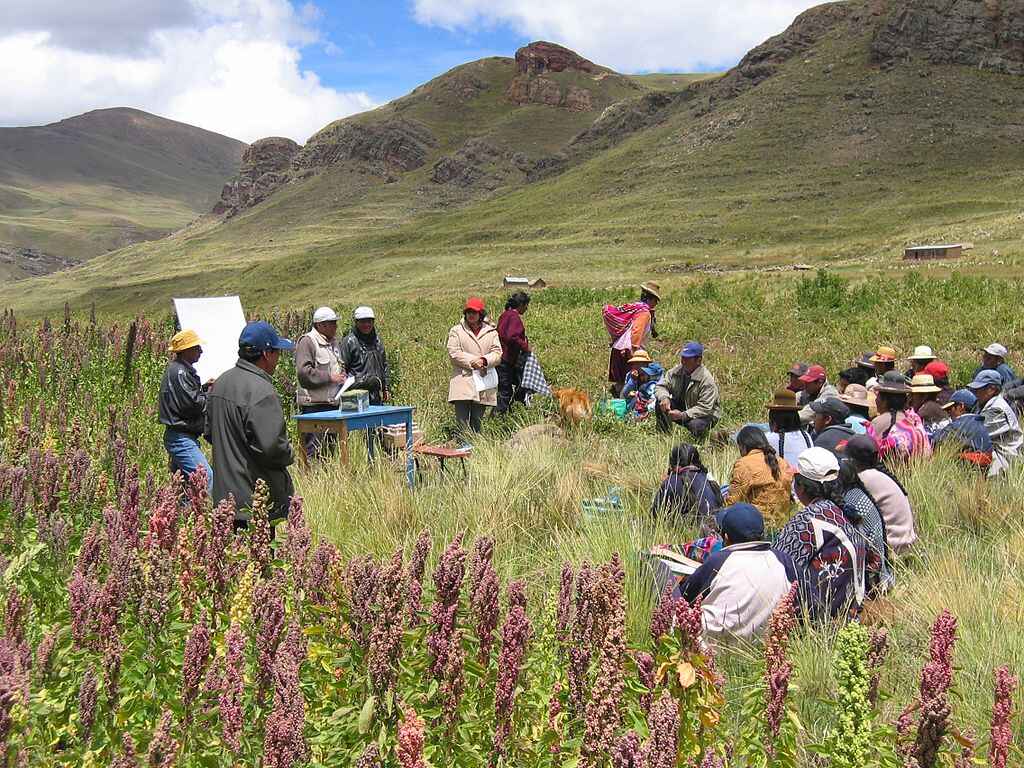Student Brings Quinoa To Ladakh, Can Help Farmers Earn up to Rs 1000 Per Kg
“As a drought-resistant, frost tolerant, low nutrient requirement, high protein and low carbohydrate crop, it is well suited for our people.”

About four years ago, a conversation with his cousin sister, left Tsewang Nurbu, a resident of Leh, baffled.
She had asked him if he knew about quinoa, an ancient plant from the amaranth family, endemic to the highlands of the Andes, and Tsewang, who was pursuing a BSc in agricultural sciences from the Sher-e-Kashmir University of Agricultural Sciences & Technology in Jammu at the time, was embarrassed to admit that he had not.
“I felt embarrassed about my lack of knowledge, but as I became aware of its unusual nature, the agriculturist in me was curious to know more. After carrying out some initial research, I was intrigued and decided to carry out a field trial to check its viability in Ladakh. As a drought-resistant, frost tolerant, low nutrient requirement, high protein and low carbohydrate crop, it is well suited for our people. Our topography and climate are ideal for the crop,” he mentions.
Not only would Tsewang go on to grow quinoa (Chenopodium quinoa) and call it “one of the finest and most satisfying experiences of his life,” he would do so using only organic practices, hoping to inspire others to follow suit.
“Earlier, it was common to see families growing an assortment of vegetables and cereals in their kitchen gardens. All food was grown organically, leaving behind no carbon footprint. Unfortunately, over the years, that changed and many farmers in Ladakh began to use chemical fertilisers instead of traditional ones like night soil (dried human excrement used as manure) or farmyard manure (fertiliser composed of waste products, typically dung and urine, produced by farm animals). My decision to grow quinoa using organic methods, was also in part to inspire others to make the shift to organic farming,” says Tsewang.

Why Ladakh?
Since quinoa is a crop that is alien to a place like Ladakh, aren’t there any risks in growing it here?
“Initially, I was concerned about this. I didn’t want to hurt the region the way the water hyacinth did to Bengal. However, having closely studied this, I am now confident that there is no such risk,” he notes.
Another preliminary trial of the crop conducted at the Stakna Farm of High Mountain Arid Agriculture Research Institute (SKUAST-K) in 2015 to test the suitability of quinoa at a location 27 km southeast of Leh along the Leh-Manali Highway, presented some interesting results.
“On the basis of crop growth and its performance, it can be summarised that the crop performed well and the grain yield was 20 times more than that sown. In Ladakh, its performance is better than all other grain crops like wheat and barley, which yield at the most 7–8 times the weight of the seed sown,” says this study published in the June 2016 edition of Current Science.
In fact, this crop was grown on “an experimental plot of 1.5 m 2.0 m size was selected to sow 10 g of quinoa seeds (var. Raksha Srinova) received from DRDO, New Delhi. The seeds were sown in 10 lines and 20 cm apart. Germination started after 9 days of sowing. The seedlings were thinned one month after germination to maintain a plant-to-plant distance of 10 cm. No fertiliser, insecticides or pesticide was applied,” the study adds.

Growing Quinoa
The most challenging part for Tsewang was to acquire quality seeds. At the time quinoa was still not very popular in India, so many people outside of metro cities, weren’t aware of it. It took him more than a couple of weeks to get in touch with a trustable seed supplier in Delhi. In the following year, he carried out his first field trial in Hundar village of Nubra Valley.
Although transplanting is the most effective way to sow the quinoa plant, he lacked the workforce and funds and instead opted for line-sowing.
“I used about 15 to 20 kg of seeds and 15 to 20 tonnes of farmyard manure to sow 1 hectare of land. The seeds start to germinate after a week. The plant sprouts grow rather slowly initially but eventually shoot up to and grow over three feet in height. The plant needs proper spacing to ensure that they do not have to struggle or compete for nutrients, water and sunlight. It helps to weed the plant twice. The first weeding must be done after two to three weeks and the second after 45 days. Thinning is also done about two to three weeks of sowing in such a way that the distance between each row is about 50 cm,” describes Tsewang.
The quinoa plant is drought-resistant and needs only about 25 to 30cm of irrigation per year. Meanwhile, the watering is usually done in about 10-day intervals, but the frequency depends on soil condition. Harvesting is done after 120 to 150 days, i.e. four to five months when it shows signs of maturation. On maturity, the leaves turn yellow and start to fall off, leaving only dried seed heads on the stalk. The production of quinoa in Ladakh is about 4,000 kg per hectare.
“In my first year of trial, I used about 2 kgs of seed for 1.5 kanal of land, and the yield was about 200 kg. The sowing was done in April and harvesting was done in September,” he notes.
In India, this plant is now grown in Rajasthan, Haryana, Andhra Pradesh, and Uttarakhand, although the productivity is comparatively higher in Ladakh.
“As mentioned earlier, the crop was grown organically. Also, if I had used too much manure, it would have led to more vegetative growth. Hence, the crop would not have been able to grow seeds, and the plant would droop down. I kept the frequency of irrigation high during the seedling and flowering stage and low during other stages. Besides keeping a strict check on how much manure and irrigation is used, I must insist that thinning, weeding, and harvesting should be done at the proper time. Harvesting should also be done carefully as I lost lots of seeds due to poor harvesting technique the first time around,” notes Tsewang.
He believes quinoa can provide a viable alternative crop to mitigate the effects of drought caused by climate change. It can be grown instead of other water-intensive crops during periods of water scarcity. Quinoa not only provides high nutrient value but also helps conserve water.

What Advantages Does Quinoa Have For Ladakh’s Population?
Quinoa is drought-resistant, frost tolerant and needs a small amount of nutrients for its nourishment, which makes Ladakh one of the best places in the world to grow quinoa because it’s a cold desert with deficiencies in water and nutrient content.
Additionally, quinoa is rich in proteins, fibres, vitamins and minerals, and low on carbohydrates. It has been globally recognised in the fitness and health sectors for its nutritional properties, especially its high protein, fibre and ash content with comparatively less carbohydrates. This makes it ideal for weight-loss and muscle gain.
“It is ideal to add more nutrients to our diet along with traditional crops such as wheat, barley and buckwheat, which have high carbohydrate content. The leafy portions of the plant are rich in iron, which helps prevent anaemia and is an important facet of treating scurvy. A soup made from the seeds is known to help prevent tuberculosis. We can use quinoa as a substitute for high carbohydrate crops such as wheat and rice,” argues Tsewang.
Going further, Tsewang adds, “A cup of quinoa provides twice as much protein and about 5 gm more fibre than the same amount of white rice. Quinoa also blends well with healthy bread, and its seeds can also be mixed in local Ladakhi kulchas (cookies). In the summer, they can also be added to smoothies to create new tastes and flavours.”
Other Potential Uses for Quinoa in Ladakh
“Another important feature of the crop is the high production of plant biomass, which could be utilised as nutritive feed in the fodder deficit region,” notes the 2016 study.
“Quinoa was first used as animal fodder around 5,000 to 2,000 years back. Later, it was domesticated by humans in Peru and Bolivia. The seeds of quinoa have an outer powdery covering called Saponins, which protects the seeds from insects and pests. Saponin was earlier regarded as a waste by-product, but it turned out to have great potential for use in the pharmaceutical sector to make products such as soaps, detergents, cosmetics as well as in the preparation of beer and production of fire extinguishers. We can even sow quinoa after harvesting season for its vegetative parts only, which can be used as fodder,” says Tsewang.
Can The Crop Bring in Income for Ladakhi Farmers?
Tsewang believes farmers can adopt growing quinoa widely but adoption should be handled sustainably. Since it fetches a high price as compared to other crops, there is a danger of complete replacement or extinction of traditional crops, which will lead to mono-cropping.
Mono-cropping as we know results in soil erosion, reduction of soil fertility, the outbreak of pests, reduction of food diversity, and many more.
“The market value of quinoa is high, but it also depends upon the quality. For example, organic quinoa fetches as high as Rs 1000/kg but on average, it fetches around Rs 500/kg. If conditions are favourable, the average yield is about 4000 kg/ha (kg/hectare). I have reached out to farmers and agriculture scientists in the region, but for the most part, they knew very little about quinoa and were shy to adopt it. They seem more confident now, and from next year, I am confident that farmers will adopt the crop on a commercial scale. Last year, Stanzin Gonbo, a senior agriculture officer in Nubra, also carried out a trial, which was a success,” he says.
The advantages of growing quinoa organically in Ladakh are very apparent. The weather conditions are ideal, it offers a much healthier alternative to either polished white rice and oatmeal for consumers, and more than anything else, it can bring in higher income for farmers. The potential is immense, but the question remains whether it will be fulfilled.
(Edited by Gayatri Mishra)
Like this story? Or have something to share? Write to us: [email protected], or connect with us on Facebook and Twitter.
If you found our stories insightful, informative, or even just enjoyable, we invite you to consider making a voluntary payment to support the work we do at The Better India. Your contribution helps us continue producing quality content that educates, inspires, and drives positive change.
Choose one of the payment options below for your contribution-
By paying for the stories you value, you directly contribute to sustaining our efforts focused on making a difference in the world. Together, let’s ensure that impactful stories continue to be told and shared, enriching lives and communities alike.
Thank you for your support. Here are some frequently asked questions you might find helpful to know why you are contributing?


This story made me
-
97
-
121
-
89
-
167











